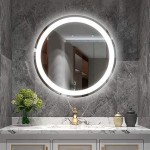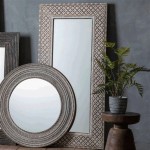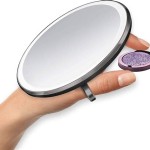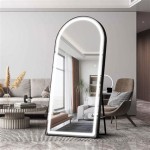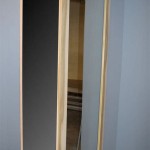Is the Image in a Convex Mirror Inverted?
Convex mirrors, often referred to as "fish-eye" mirrors, are curved outwards like the exterior of a sphere. They are commonly used in various applications, including rearview mirrors in vehicles, security cameras, and store surveillance systems. Unlike plane mirrors that produce a simple reflection, convex mirrors form images with unique characteristics, including their orientation. A common question that arises is whether the image in a convex mirror is inverted, meaning whether it appears upside down. This article delves into the nature of images formed by convex mirrors and explains why they are not inverted.
Understanding Image Formation in Convex Mirrors
To understand why images in convex mirrors are not inverted, it's crucial to grasp how images are formed by these mirrors. Convex mirrors, like all curved mirrors, function based on the laws of reflection. When a light ray strikes a convex mirror, it bounces off the surface at an angle equal to the angle of incidence. The reflected rays diverge, meaning they spread out as they travel away from the mirror. These diverging rays do not converge at a single point, but instead appear to originate from a virtual focal point behind the mirror.
The Virtual Image in a Convex Mirror
The virtual focal point of a convex mirror is a crucial concept for understanding image formation. Since the reflected light rays diverge, they never actually intersect to form a real image. Instead, an observer sees a virtual image formed by the apparent intersection of the reflected rays behind the mirror. This virtual image is always smaller than the object, upright (not inverted), and located behind the mirror.
Why Convex Mirrors Produce Upright Images
The upright nature of images in convex mirrors arises due to the diverging nature of reflected rays. As light rays diverge from the mirror, they create the illusion of an image located behind the mirror. This virtual image is upright because the rays diverge in a way that preserves the orientation of the object. The divergence of light rays also explains why convex mirrors produce smaller images. The reflected rays spread out further than the incident rays, resulting in a smaller image.
Applications of Convex Mirrors
The characteristics of images formed by convex mirrors make them suitable for various applications. Their wide field of view, which allows for a larger area to be observed, makes them ideal for rearview mirrors in vehicles. This wide view helps drivers see vehicles approaching from their blind spots. Convex mirrors are also used in security cameras and store surveillance systems to provide a wide-angle view of a larger area.
Conclusion
Convex mirrors do not produce inverted images. They form virtual, upright images that are always smaller than the object. This characteristic stems from the diverging nature of reflected light rays and the formation of a virtual focal point behind the mirror. The upright image and wide field of view make convex mirrors useful in a variety of applications, enhancing safety and security in various settings.

Question Recalling Whether The Image Produced By A Convex Mirror Can Be Inverted Nagwa

Laterally Inverted Convex Mirror
Is It Right A Convex Mirror Always Forms An Inverted Image Quora
Can Convex Mirrors Produce Lateral Inversion Quora

Real Image Versus Virtual Convex Mirror
Objects In The Mirror Are Actually Images Article Khan Academy

What Would You Use To Obtain A Real And Inverted Image For Any Position Of An Object Convex Mirror Or Concave Lens B C
Can Convex Mirrors Produce Lateral Inversion Quora

What Would You Use To Obtain A Real And Inverted Image For Any Position Of An Object Convex Mirror Or Concave Lens B C
Objects In The Mirror Are Actually Images Article Khan Academy

